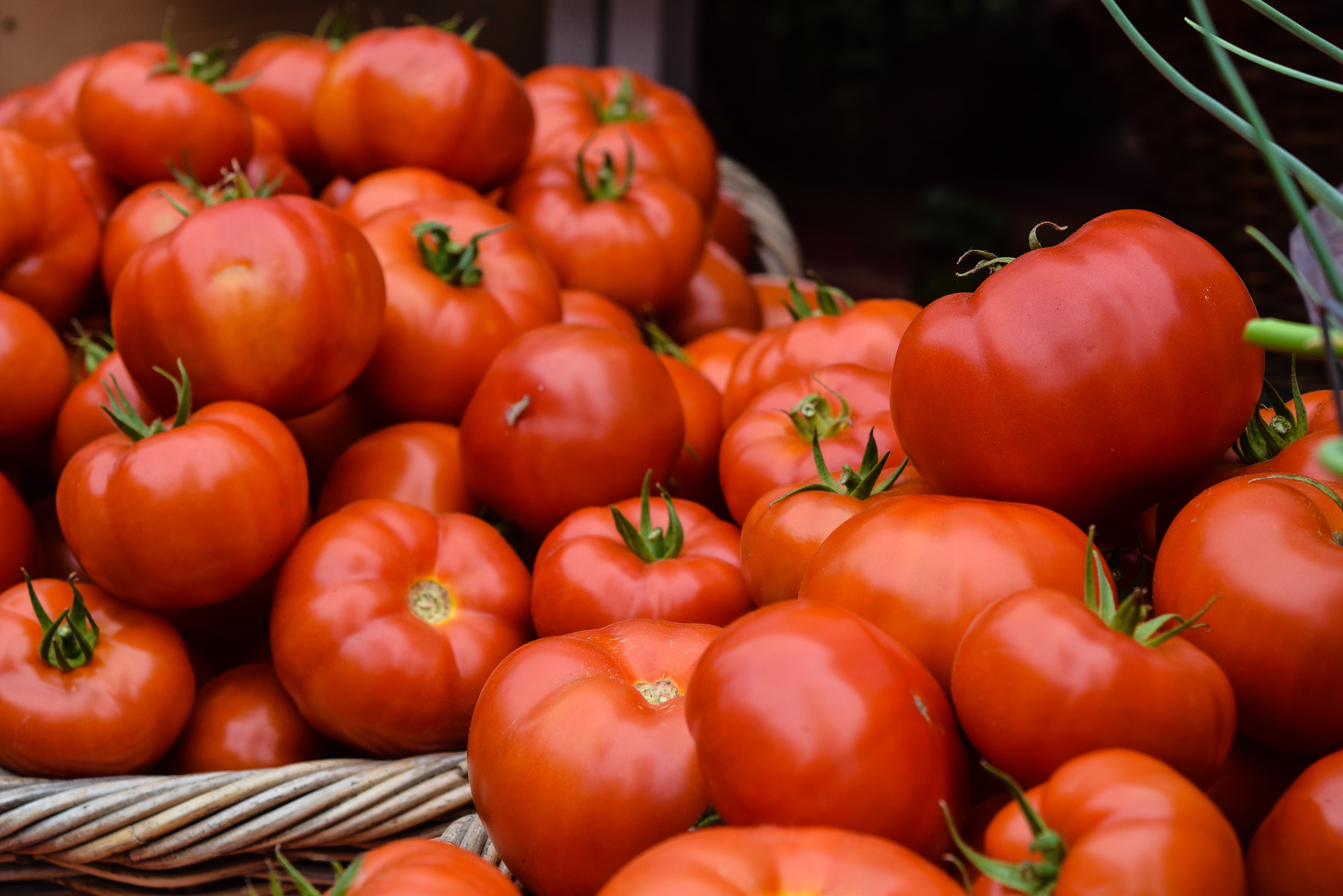
All about canning and freezing tomatoes
easy to moderate
Save meal preparation time in the days and months ahead by sealing the flavour of garden-fresh tomatoes while they are at their bountiful best.
Traditional canned tomatoes, seasoned tomatoes, sassy tomato sauces, juice, and salsas are all options for preparing shelf stable convenience foods to add interest to winter menus.
Canning:
When choosing tomatoes for home canning, select firm, ripe tomatoes free of surface imperfections. Tomatoes heavy for their size will usually be the juiciest. The average bushel of tomatoes weighs about 25 kg (53 l) and will yield 15 to 20 L (quarts) when quartered and canned. One kilogram (2 lb) of fresh tomatoes will yield 1 L (1 quart). Skins are usually removed for canned product and blanching is effective to achieve that. To blanch, bring water to a boil in a deep saucepan (half full), Score an x on each tomato bottom and dip into boiling water 30 seconds or so just until skins begin to curl. Remove from saucepan and plunge into ice water, slip off skins.
As tomatoes have ph values around 4.6 (the dividing line between high and low acid foods) it is important to take precautions when canning. Add 25 mL (2 tbsp) bottled lemon juice per one L (1 qt) to ensure the product is acidic enough to be processed in a boiling water bath. Should You find the taste too acidic add a bit of granulated sugar to off set it. Citric acid may replace the lemon juice at levels of 2 mL (1/4 tsp) per 500 mL (pint) jar. Low acid tomato sauces such as spaghetti sauce and those which incorporate other vegetables or meats MUST be processed in a pressure canner, or frozen.
DO NOT CAN tomatoes if they froze on the vine. The acidity is too low to can them safely so there is an increased risk of botulism. If the tomatoes are still usable, eat them fresh, cooked into recipes, or store them in the freezer but keep them out of the canner!
Previously frozen tomatoes (picked before frost and stored in the freezer) can be used to make a well cooked product like crushed tomatoes, juice or sauces and then canned in a pressure canner.
A pressure canner for home preserving may be a dial gauge or a weighted gauge for indicating and regulating pressure. Carefully clean and check your canner prior to use to ensure it is working correctly. Follow manufacturer’s instructions and the recipe carefully to food safety. To pressure can tomatoes, whole, halved, packed in water or in juice, raw pack or hot pack follow the guidelines of reputable preservation experts like the National Center for Home Food Preservation or companies who specialize in home preservation equipment.
When water bath canning, the decision to utilize hot or cold packs is up to you. Hot packs do exhaust air from the tomatoes which aids in reducing the tendency for tomatoes to float and reduces the separation of tomatoes and their juice during storage. Hot pack means to bring tomatoes and their canning liquid to a boil, reduce heat and simmer five minutes prior to packing in a jar. Water bath processing times for tomatoes (whole or halved) packed in juice or water are 45 minutes for pints and 50 minutes for 1L (quart) jar Whole or halved tomatoes without added liquid require 90 minutes for 500 mL or 1 L (pint and quart) jars.
Freezing:
Freezing tomatoes is very easy and simple. Wipe each tomato well, remove blossom end, fill freezer bags, remove air, label, date and freeze. Tomato skins are very easily removed from the frozen product when run under hot water, or added to soups and stews. There are also great recipes available for salsas, and antipastos to freeze.

